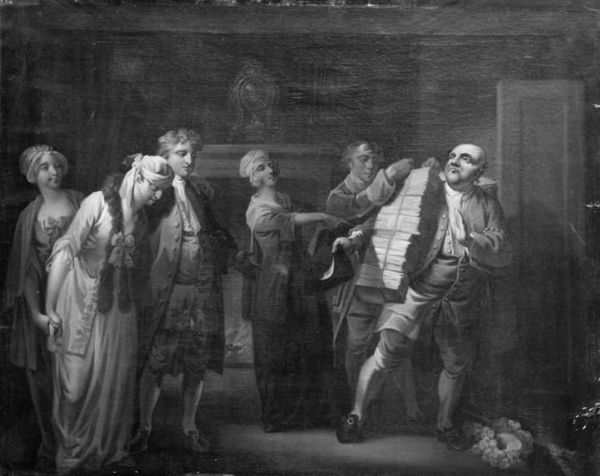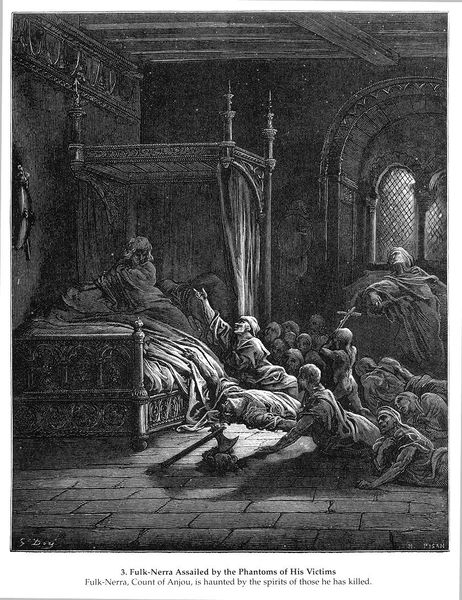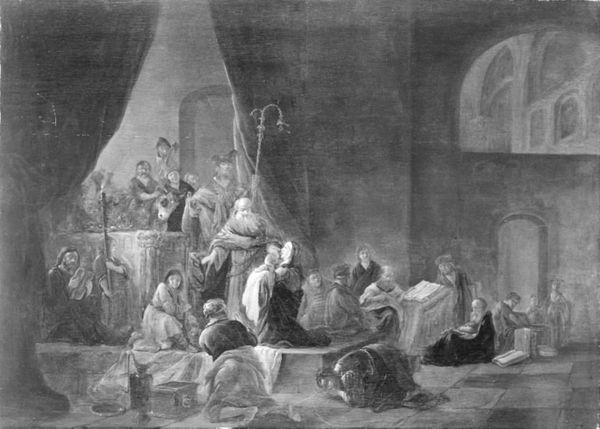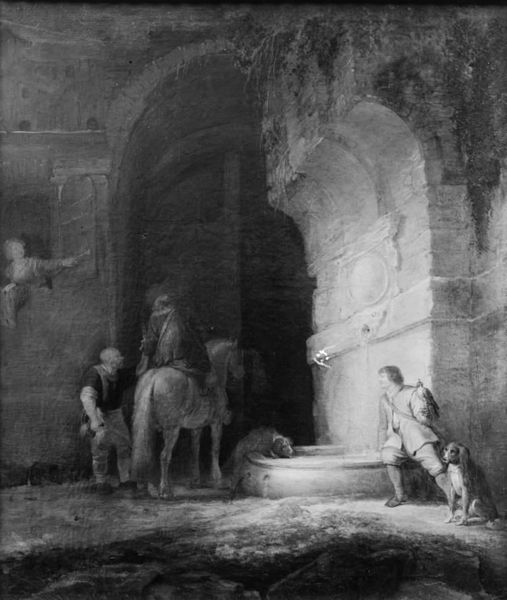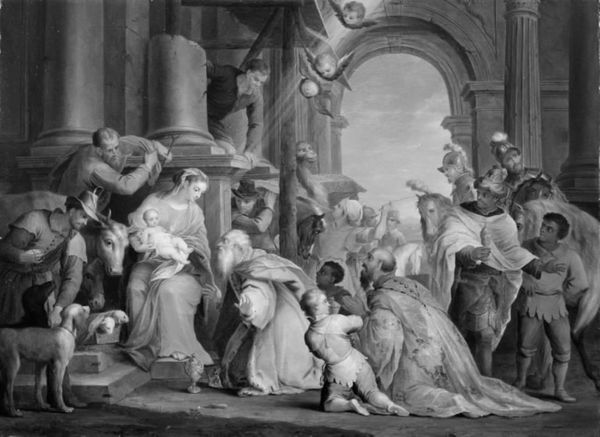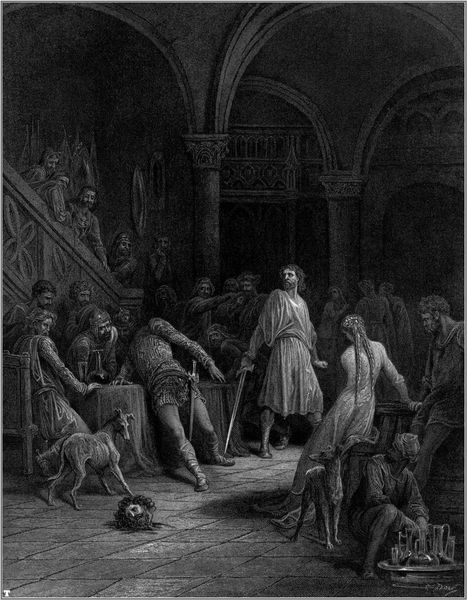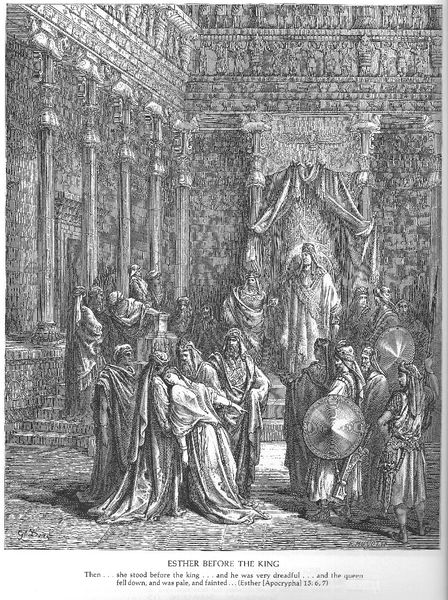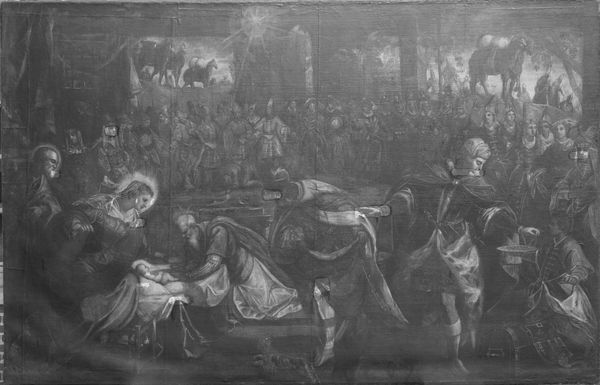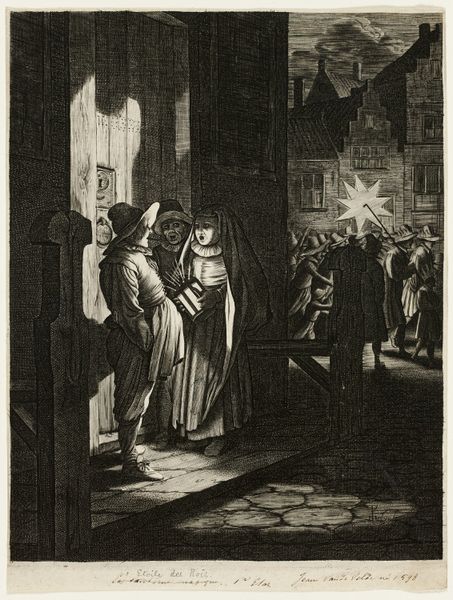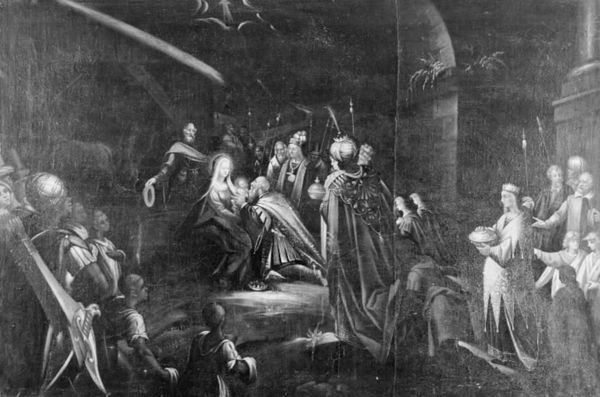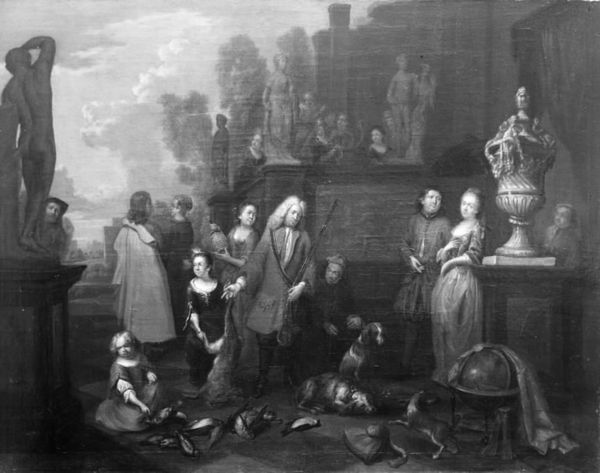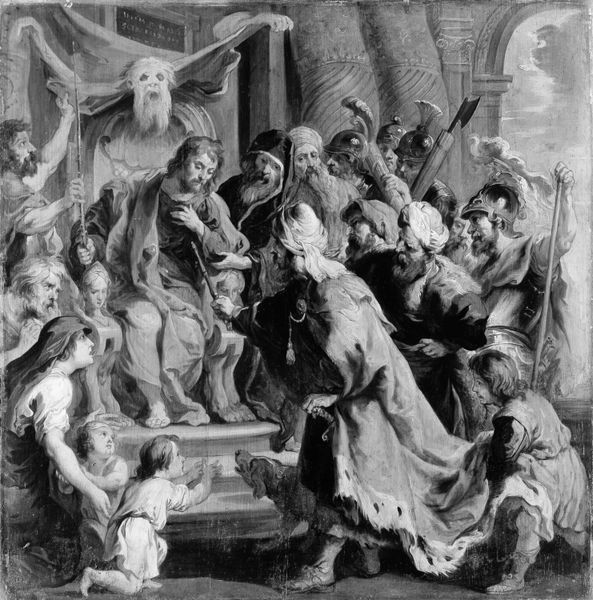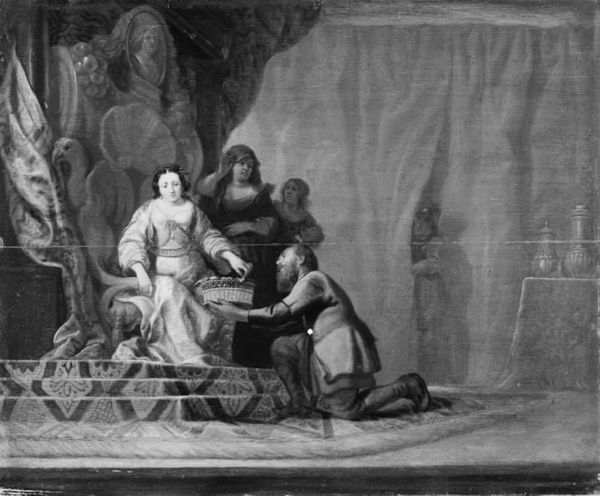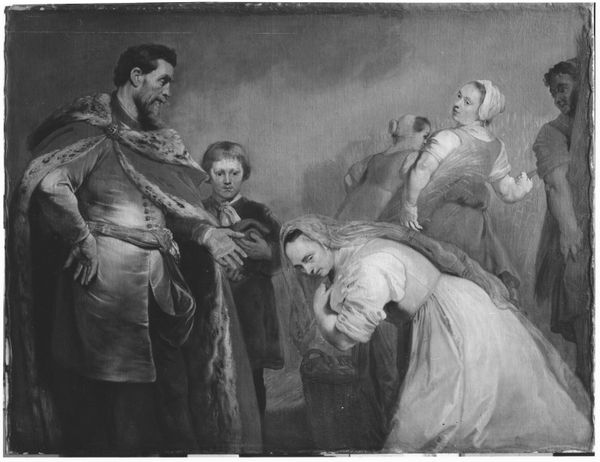
painting, wood
#
baroque
#
painting
#
figuration
#
wood
#
history-painting
#
monochrome
#
monochrome
Dimensions: 27 cm (height) x 23.5 cm (width) (Netto)
Editor: Here we have Willem de Poorter's "King Ezechias," created sometime between 1623 and 1648. It's an oil on wood painting. The monochrome palette makes it feel quite somber, and there's a fascinating asymmetry in the composition. What do you see in this piece, looking at it through a formalist lens? Curator: Initially, the composition arrests our attention. Note the interplay of light and shadow. The artist masterfully utilizes chiaroscuro to guide the viewer’s gaze. Observe how the architectonic archway in the background is juxtaposed with the figures clustered in the foreground. This intentional placement invites a deeper exploration of spatial relationships. Editor: The contrast between the rigid architecture and the more fluid forms of the people is striking. Does that contrast mean anything, in your view? Curator: Perhaps, or it could be merely aesthetic, meant only to create visual interest, and the use of the monochrome, in and of itself. We are left to consider whether it underscores a sense of gravity, an austere moral tone. Furthermore, consider the pyramidal structure of the figures. Do you perceive how the arrangement anchors the composition? Editor: I do now that you point it out! And that low-crawling figure and gleaming metal object break that strong symmetry, but draw your eye right down. Curator: Precisely. De Poorter disrupts any easy symmetry, forcing our eye to complete a visual journey. Editor: So, focusing on these formal elements first allows a more nuanced understanding, instead of immediately diving into historical context? Curator: Precisely. Understanding composition first may give a better indication into meaning and content of history paintings like this one.
Comments
No comments
Be the first to comment and join the conversation on the ultimate creative platform.
